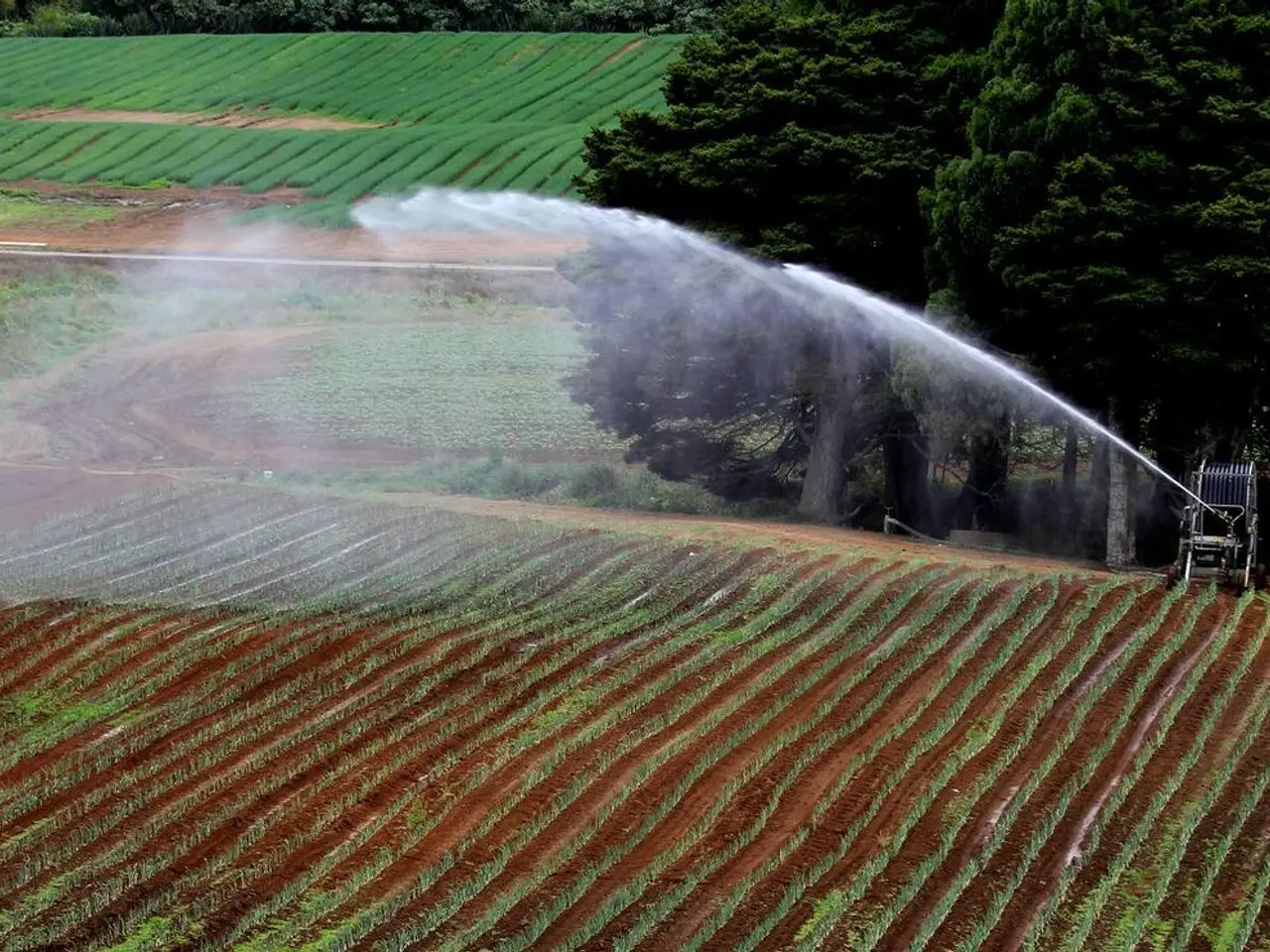Soil Disruption Lifeblood: Thriving Flora Adaptations
Loamy soil, renowned for its balanced composition of clay, silt, and sand, offers an ideal environment for plant growth due to its good drainage and nutrient retention abilities. However, several factors can impact its quality and health.
Nutrient cycling is a critical factor influencing loamy soil's fertility. Adequate nutrient availability is essential for plant growth, and factors such as pH levels and microbial activity play a significant role in nutrient uptake.
Maintaining the optimal pH range of 6.0 to 7.0 is crucial for nutrient availability and microbial activity. Deviations from this range can negatively impact soil health.
Organic matter, which helps improve soil structure and retain moisture, is another essential component for maintaining loamy soil health. Adding organic matter can enhance soil fertility and overall health.
Water management is also key. While loam is well-draining, excessive water can lead to compaction, and insufficient water can cause drought. Proper irrigation strategies are essential for maintaining optimal moisture levels.
Soil microorganisms, which play a vital role in nutrient cycling and decomposition, are crucial for maintaining fertile and healthy loamy soil. Healthy microbial activity is necessary for maintaining soil fertility.
Compaction, caused by heavy traffic or improper management, can reduce aeration and water infiltration, affecting root growth. Regular aeration is necessary to prevent compaction.
Soil erosion and pollution can degrade loamy soil quality by removing topsoil and introducing harmful contaminants. To maintain the health and quality of loamy soil, regular fertilization, proper watering, aeration, organic matter addition, and monitoring pH levels are essential.
In addition, it's important to note that human activities like poor farming practices, aggressive cultivation, misuse of fertilizers, overgrazing, deforestation, urban expansion, industrial and mining activities contribute to soil degradation. Preventing and mitigating soil degradation requires sustainable land management techniques such as conservation tillage, crop rotation, contour farming, efficient irrigation, organic farming, and planting cover crops.
The "Great Green Wall" project in Africa is an example of a successful desert greening initiative. Desert greening, while beneficial, has the potential to have unintended consequences on water and weather patterns. It's crucial to consider these factors when implementing such projects.
Plants can absorb lead from contaminated soil, posing a potential health risk to humans and animals. Therefore, it's essential to ensure that soil is not contaminated before planting.
Fungi and lichen are the most common pioneer species in primary succession, as they have the ability to break down minerals to form soil and develop organic matter. In secondary succession, when vegetation is removed but the soil remains, pioneer species begin from roots and seeds in the residual soil. Pioneer species in secondary succession are typically hardy plant and microbial species that are photosynthetic, able to produce a large volume of seeds, wind pollinated, and able to survive long dormancy periods.
In conclusion, maintaining the health and quality of loamy soil is crucial for sustainable farming and gardening. By understanding the factors that affect loamy soil and implementing appropriate management practices, we can ensure that our soil remains fertile and productive for generations to come.
- Science plays a significant role in understanding the factors that impact loamy soil health, such as nutrient cycling, pH levels, and microbial activity.
- Environmental science and education-and-self-development can provide valuable insights into strategies for maintaining loamy soil health, like adding organic matter, water management, and preventing compaction.
- Identifying and addressing issues like soil erosion, pollution, and degradation driven by human activities is essential for ensuring the long-term health and quality of loamy soil, particularly in the realm of home-and-garden and lifestyle.
- Online education platforms can offer opportunities for lifelong learning about loam soil health, sustainable farming practices, and desert greening initiatives like the "Great Green Wall" project.
- At the intersection of gardening, environmental science, and education-and-self-development lies a commitment to responsible land management and ensuring the continued health and fertility of loamy soil for sustainable growth and productivity.




